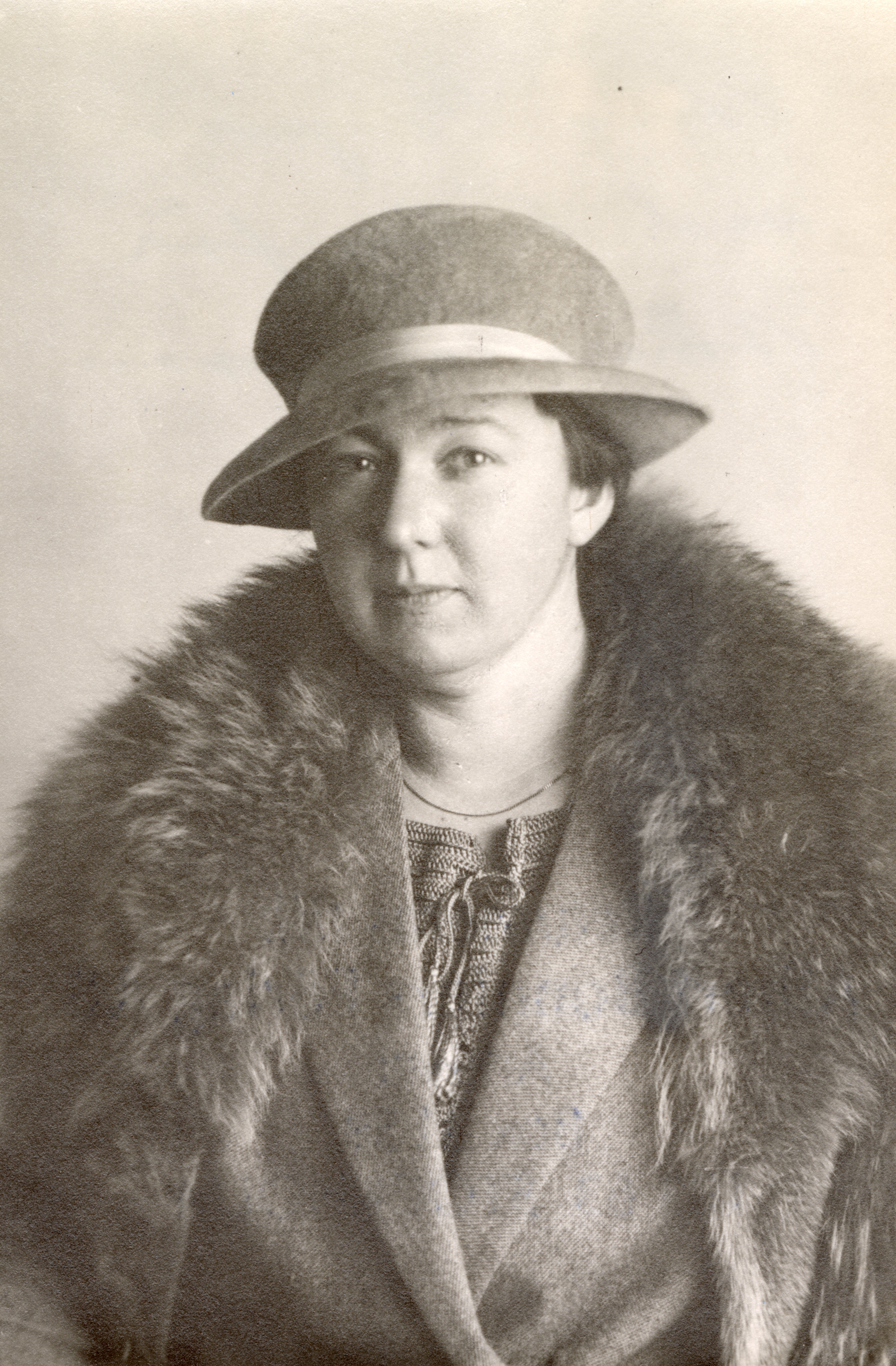Stina Bergman’s most active period in the film industry was between 1940 and 1947, when she was head of the Screenplay Department at Svensk Filmindustri (SF), but she came into contact with film long before that via her husband, the writer and playwright Hjalmar Bergman (1883-1931). He worked especially closely with Victor Sjöström between 1919 and1924, but also with Stina’s brother Per Lindberg The Norrtull Gang (Norrtullsligan, 1923), John W. Brunius Charles XII (Karl XII, 1925), Karin Swanström Girl in Tails (Flickan i frack, 1926) and Gösta Ekman Husband by Proxy (En perfekt gentleman, 1927).
Stina and Per’s parents, August and Augusta Lindberg were both actors. August Lindberg was regarded as Sweden’s finest Shakespeare interpreter of his day and was also a successful director and head of theatre. Per Lindberg followed his father’s footsteps during the 1920s and 1930s, but thanks to his sister, he also became involved in a number of notable films. The theatre world had been close to Stina’s heart since her childhood, and when she married Bergman at the age of 20, that closeness was cemented. Stina was certainly no ordinary housewife. Given that the couple had no children and Hjalmar had a number of homosexual relationships, it would be hard to find a more loyal artist’s wife. She was everything to him: housekeeper, secretary and artistic manager for life.
As such her impact on her husband’s career should not be underestimated, and even if during Hjalmar’s lifetime she was not actively involved with screenplays, she was his faithful supporter and foremost critic. After his death she embarked on a collaboration with Gustaf Molander, and together they wrote the screenplays for his film versions of two of her husband’s plays: Swedenhielms (1935) and Dollar (1938). Such was her success that Stina made contact with her brother and persuaded him to return to film after an absence of 15 years. Stina and Per together wrote a series of screenplays for three other film versions of literary works, Gubben kommer (‘The Old Man’s Coming,’ 1938) based on a work by Gösta Gustaf-Janson, Rejoice While You’re Young, Fellow Cadets (Gläd dig i din ungdom, 1939, after a novel by Vilhelm Moberg), and – unsurprisingly – His Grace’s Will (Hans Nåds testamente, 1940), based on her husband’s novel which been adapted in a silent version by Victor Sjöström in 1919. Prior to this she had re-worked the novel for radio and for a production at Stockholm’s Vasa Theatre, both directed by her brother.
All of these films were produced by SF, where Karin Swanström, whom Stina had got to know during the 1920s, was head of production. During the Second World War it was considered necessary to more away from the comedies of the 1930s to more serious subjects, and in 1940 Stina Bergman accepted Swanström’s offer to become the head of a newly-created Screenplay Department.
Stina Bergman was the first person who can be regarded as having functioned as a writer’s manager, and through her position at SF she was the Swedish film industry’s first permanent reader and dramaturgist, whose job it was to read submitted screenplays plus literature suitable for film, and to be an advisor on how various scenes could be realised. She is also probably the first person to write a book on the subject: “Några ord om hur man skriver en film” (‘A Few Words On How To Write A Film’) was published in 1942.
Whereas Karin Swanström and SF Director Olof Andersson were both forced to leave when Carl-Anders Dymling became the head of SF in 1942, Stina Bergman was allowed to stay. Of a literary bent himself, Dymling had respect for her and together they combed student theatre groups in order to find new talent. One day they went to see Strindberg’s “Kaspers fet-tisdag” (‘Punch’s Shrove Tuesday’) directed by a young Ingmar Bergman. “The next day I was summoned to Stina,” writes Ingmar Bergman in “The Magic Lantern”, going on to explain that he was given a year’s employment and that he “worked under Stina Bergman’s competent and motherly guidance.”
The rest is history.
Bengt Forslund (2015)
(translated by Derek Jones)
Basic info
Main profession: Screenwriter
Born: 1888
Died: 1976
Active: 1935-1947
Filmography
Manus:
Hans Nåds testamente (1940)
Gubben kommer (1939)
Gläd dig i din ungdom (1939)
En kvinnas ansikte (1938)
Dollar (1938)
Swedenhielms (1935)
Scenario:
Stora skrällen (1943)
Ej inspelat manus:
En enda natt (1939)
Published works
Några ord om hur man skriver en film. (1942)
